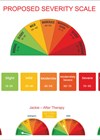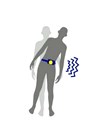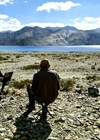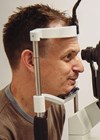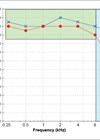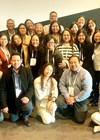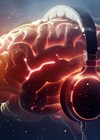Audiology features
How to identify and support adults with auditory processing disorder: a focus on low-gain devices and auditory training
Some adults struggle with hearing in noise despite normal audiograms. Tools like the HHIA, low-gain devices and auditory training can help identify and support these cases. In this article, Angela Alexander and Fatima Abbas use a case study to discuss...
Tish Gaffney – AAA President
From a sunny Southend, UK, Gareth Smith takes 10 minutes to dial into the Sunshine State, USA, and catch up with Tish Gaffney for a lightning-speed chat on the movements and motivations of the 35th president of the American Academy...
Protheses for patients with severe bilateral vestibular loss
In February 2003, I met a patient with severe bilateral vestibular loss due to gentamicin toxicity, and I felt disheartened. Despite the fantastic diagnostic vestibular lab we had at Maastricht University Hospital, what could I truly offer her? She had...
Where ART meets Science: A unifying story in ENT & Audiology News
We are delighted to introduce a stunning new cover series by Dyon Scheijen, a Maastricht-based clinical physicist-audiologist and artist fascinated by the psychology of hearing. Dyon explores the connection between audiology, acceptance and commitment therapy (ACT) and sound perception. He...
The ups and downs of overseas research – the inner ear at altitude
Conducting research at extreme altitude presents unique challenges. This study of the inner ear at 5350m navigates setbacks in a quest for scientific discovery. Having completed a diploma in mountain medicine in my foundation years, I decided to undertake a...
Empathic consulting: elevating audiology through connection
A new course in empathic consulting helps audiologists deepen patient trust and engagement, focusing on emotional insight to improve care quality and consultation outcomes. Leightons and The Hearing Care Partnership have developed an innovative course focused on empathic consulting for...
In conversation with Helen and De Wet in Paris: cochlear implants in the year 2074
The World Congress of Audiology (WCA), held in Paris, France, in September 2024, provided a fantastic opportunity to reconnect with colleagues from around the globe. I took the chance to sit outside in the sunshine with De Wet Swanepoel from...
Audiology and ophthalmology: a comparative perspective on diagnostics and patient care
What are the similarities and differences between audiology and ophthalmic practices, and what can we learn from each other? Rosalyn Painter finds out. I’m here with Chris Gordon and Anthony Vukic from Gloucestershire Hospitals NHS Foundation Trust to find out...
Optimising hearing aid solutions for tinnitus sufferers: essential factors to consider
A tailored approach combining counselling, sensory management and perceptual training can improve the effectiveness of hearing aids in managing tinnitus for individual patients. Hearing aids are useful tinnitus therapy tools, according to tinnitus management guidelines. However, there are few published...
Why hearing above 8 kHz matters more than you think
This review explores the significance of extended high-frequency hearing loss (above 8 kHz) and why it may be worth doing clinically more frequently. There are many conditions that may hide underneath a normal audiogram, and one of the easiest to...
Silent crisis: the exodus of hearing healthcare professionals from the Philippines
The migration of Filipino audiologists and otolaryngologists abroad is worsening the shortage of hearing specialists. Improving local conditions is vital to retaining talent. As ear and hearing healthcare professionals practising in the Philippines, we have seen the struggle in keeping...
Beyond hearing aids: early interventions in hearing care to lower dementia risk
Published in print under the titleHearing care and dementia: professional insights on the new Lancet Commission findingsThe Lancet Commission on ‘Dementia prevention, intervention and care: 2024 report’ highlights a list of potential modifiable factors to reduce dementia risk. As with...


